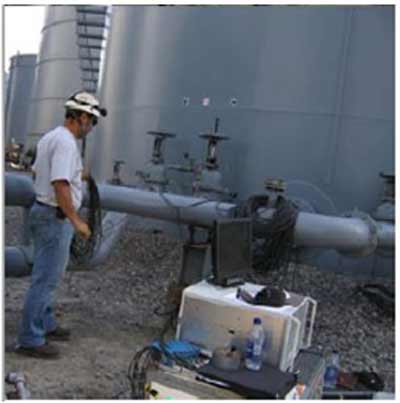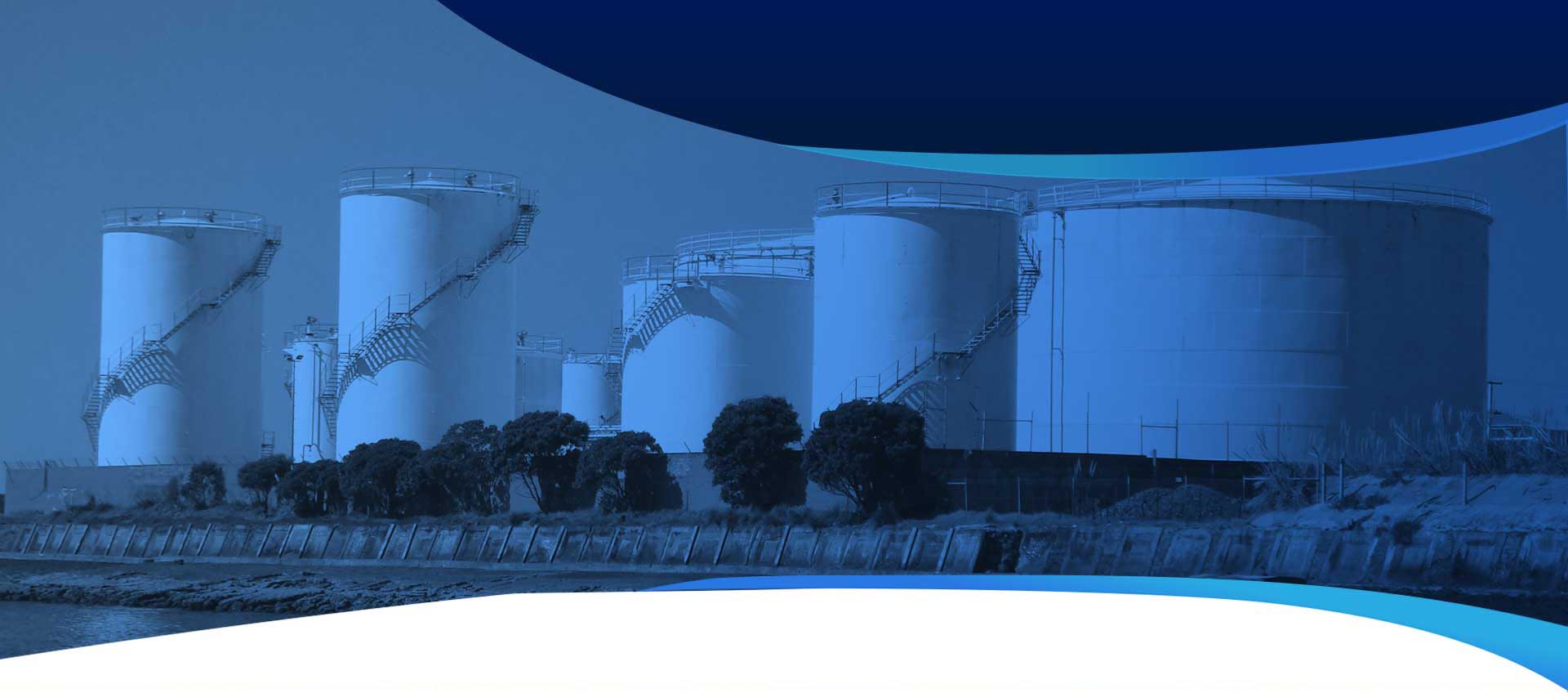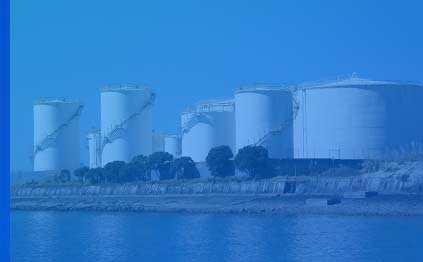Oil and Chemical
Composite Tank Inspection
( Fiberglass Reinforced Plastic (FRP) Tank Inspection )
TISEC provide Visual as well as Acoustic Emission services for the inspection of FRP tanks.
Certified Internal and External Tank Inspection – Typically 5 year inspections that includes review of previous inspection reports and inspection of flange bolts, sounding for delaminations, crazing, surface hardness, and bottom flatness, in addition to features inspected during Periodic Preventive Maintenance Inspections.
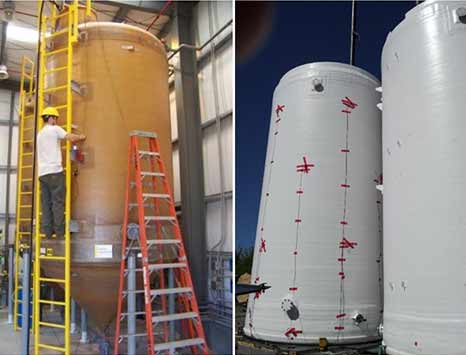
Use Acoustic Emission (AE) to inspect new and in-service FRP tanks for:
- resin cracking,
- fiber-matrix debonding,
- fiber pullout,
- fiber breakage,
- delamination, and bond failure in assembled nozzles and manways
AE inspection can be performed on:
- atmospheric
- vertical tanks
- atmospheric
- pressure vertical tanks
- atmospheric
- vacuum vertical tanks
- atmospheric
- pressure horizontal tanks
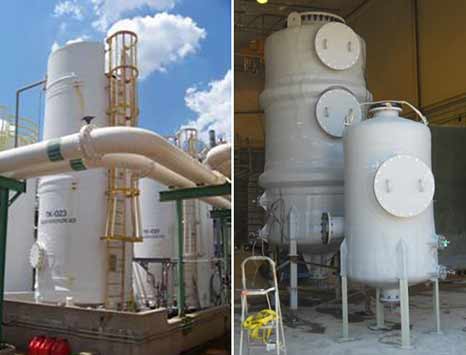
FRP structural integrity tests typically take about 1/2 day to complete depending on pump capacity, tank capacity, and access limitations. The TISEC acoustic emission FRP tank inspection procedure satisfies the guidelines set forth in :
- ASTM Standard Practice for AE Examination of Fiberglass Reinforced Plastic Resin (FRP) Tanks;
- ASME, Boiler and Pressure Vessel Code;
- and RTP, Reinforced Thermoset Plastic Corrosion-Resistant Equipment
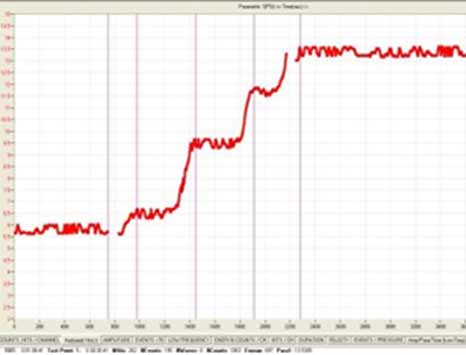
Atmospheric FRP Tank Test Procedure
- Sensors dB check;
- Attenuation determination;
- Determination of reference counts number;
- Baseline noise level determinationminutes;
- Hold at% capacity for 4 minutes minimum;
- Hold at% capacity for 4 minutes minimum;
- Hold at5% capacity for 4 minutes minimum;
- Hold at% capacity for 30 minutes minimum;
- and Sensors dB check
Different tank configurations require different fill/hold sequences. Baseline noise level may be determined at 50% capacity
Evaluation criteria are governed by total hits of moderate amplitude threshold beyond 2 minutes of hold and total counts and hits of high amplitude threshold during the entire test. Moreover, the evaluation criteria are affected by whether the tank is new-built or in-service.
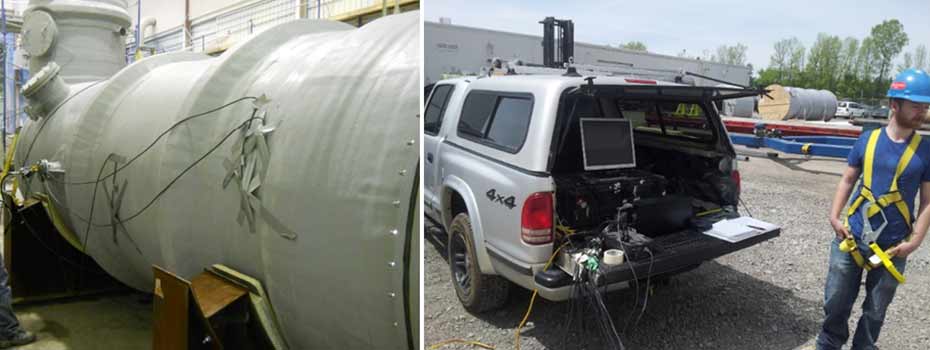

Our American Society for Nondestructive Testing (ASNT) certified inspectors have complementary NDT and safety training. With over 300 tanks tested to date, we have a proven track record for high quality nondestructive testing services and safety to meet all of your needs
